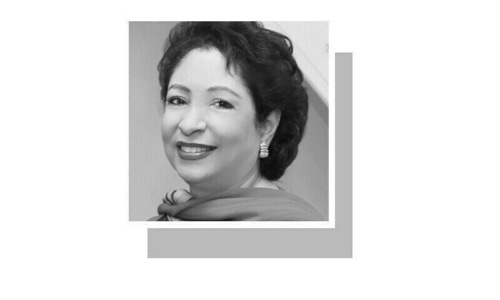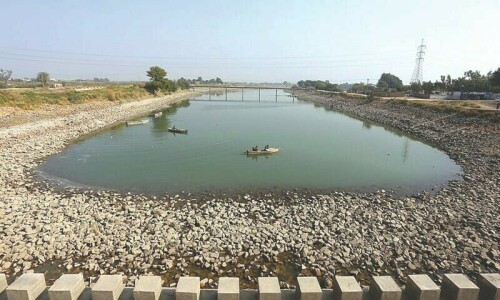ISLAMABAD: The share of female voters in the total polled votes saw a marked increase in the 2024 general elections compared to 2018, with women casting 24.4 million of the 58.9m votes. This reflected an increase of 2.7m, nearly double the growth in male votes, which rose by 1.6m.
According to a report titled Women in Elections, launched at an event organised by the Free and Fair Election Network (Fafen) on Tuesday, the share of female voters in National Assembly constituencies rose from 39.4pc in 2018 to 41.4pc in 2024. Similarly, in provincial assemblies, the female voter share grew from 40pc to 41.4pc.
The report noted that while both male and female voter turnout dropped across regions — except in Islamabad — the gender gap in turnout narrowed, decreasing from 10 percentage points in 2018 to 9 points in 2024.
Over the last ten years, female voter registration has significantly improved, reducing the gender gap from 12.8pc in 2013 to 7.7pc in 2024. Over the last five years, female voter registration has outpaced that of males by 10 percentage points, with female voter numbers increasing by 27pc compared to a 17pc rise for males.
The number of women candidates rose from 465 in 2018 to 902 in 2024
For the first time since the 2013 general election, the overall voter gender gap dropped below 10 million in 2024, standing at 9.9 million. Of this gap, 74pc was concentrated among women aged 18-35, indicating under-registration in these age groups.
In absolute terms, Punjab accounted for 51pc of the overall gender gap, while Balochistan exhibited the largest proportional gap at 12pc, followed by Khyber Pakhtunkhwa (9pc), Sindh (8pc), Punjab (7pc) and Islamabad (5pc).
The number of constituencies with a gender gap exceeding 10pc has significantly declined, from 571 in 2018 (172 national and 398 provincial constituencies) to 140 in 2024 (38 national and 102 provincial constituencies).
Punjab showed consistent progress in narrowing the gap, reducing constituencies with over a 10pc gender gap from 214 in 2013 to just 17 in 2024. Conversely, Balochistan’s progress has been slower, with the number of constituencies with over a 10pc gap dropping from 45 in 2018 to 30 in 2024.
Khyber Pakhtunkhwa also showed improvement, reducing constituencies with significant gender disparities from 105 in 2018 to 24 in 2024. Sindh followed a similar trend, with such constituencies falling from 66 in 2018 to 31 in 2024.
Women contesting elections
Female political participation also witnessed a significant boost. The number of female candidates in the 2024 elections doubled compared to 2018, with 902 women contesting 509 of the 859 national and provincial assembly constituencies. This was a sharp rise from the 465 female candidates contesting 339 constituencies in 2018.
The share of female candidates in the votes polled for national and provincial assemblies also increased, rising from 2.7pc in 2013 to 4.3pc in 2024. A surge in independent female candidates
contributed to this trend, with more women contesting and winning votes than in previous elections.
Challenges persist
Despite these gains, the report highlighted areas where progress remains slow. Women remain underrepresented as voters, legislators and political leaders. Political parties continued to favour male candidates when awarding election tickets, limiting female representation.
Additionally, the report identified polling stations where female turnout was exceptionally low. In 230 polling stations across 51 National Assembly constituencies, women either did not vote or polled fewer than 10 votes.
Efforts initiated under the Elections Act 2017 have played a crucial role in narrowing the gender gap and increasing female voter registration. However, challenges persist, particularly in ensuring equal representation and participation in the democratic process.
Published in Dawn, December 11th, 2024













































